
Tango Gameworks established itself as a survival horror specialist studio with The Evil Within and its sequel, but with its newest game, the Japanese developer has decided to pivot in a different direction. Ghostwire: Tokyo does still have some of that horror DNA – the game will probably never truly scare you, but it will still often leave you jumpy – but at its core, it’s a completely different kind of experience, placing an emphasis on fast-paced first person combat, open world traversal, exploration, and more.
But even though Tango has stepped a fair bit out of its comfort zone, Ghostwire: Tokyo is still another solid outing from the developer. It’s probably not a game that will surprise you in any significant ways, and a lot of its strengths are admittedly derived from some of its more formulaic trappings. What matters, however, is that this is still a fun, engaging open world game with more than enough going for it to sustain its runtime.
The open world is obviously the biggest draw here, in more ways than one. In Ghostwire: Tokyo, the titular city has suddenly become blanketed in a thick fog, and anybody that was touched by it has vanished. In other words, other than Akito – the protagonist – and KK – the ghost that has taken residence in his body – the entire city is completely deserted. Walking through different parts of Tokyo, both outdoors and indoors, feels strangely surreal. Piles of clothes are randomly scattered everywhere, umbrellas and strollers lie around unattended, music blares out from empty shops in districts that are completely devoid of any sign of life. It’s eerie and unique, and consistently creates memorable imagery, and combined with the ever-present and oppressive fog, gives Ghostwire: Tokyo as a whole a very distinct visual identity.
"Even though Tango Gameworks has stepped a fair bit out of its comfort zone, Ghostwire: Tokyo is still another solid outing from the developer."
The open world, meanwhile, is also a very vertical one. Clambering over rooftops and jumping from one building to another is a big part of the exploration in Ghostwire: Tokyo, and there’s a lot more to it than I’d expected there would be. Collectibles, torii gates, interesting landmarks and vistas, and more can be found on Tokyo’s rooftops, while several side quests are designed specifically to take you to higher altitudes. You might be tasked with getting to the top of a tall building, for instance, after which navigating the environment and getting to that point becomes a fun little puzzle in and of itself. Also scattered throughout the map are tengu that you can zip up to and instantly get to a high point, while a glide mechanic also allows you to float for a few seconds, emphasizing vertical movement and exploration even further.
I do have one issue with Ghostwire: Tokyo’s open world though, and I wouldn’t say it’s a small one- that as fun as it is to navigate and explore, the world is more than a little formulaic in how it’s structured and used in the game. Clearing torii gates dissipates fog from bits of the map, making more and more of it accessible to you as you progress further, and each newly unlocked area goes hand-in-hand with icons for side quests and points of interest popping up on the map. It’s very much a “set and follow the waypoint” kind of game, a “clear up this chunk of the map” kind of game, a “find all the collectibles” kind of game. Don’t get me wrong, it’s a lot of fun- but while I was playing it, I also often felt like I was going through the motions a little bit.
Thankfully, the actual quests are great. Even though Ghostwire: Tokyo is very much an open world game, a decent cumulative chunk of it is set in instanced, designed, linear environments. In these moments, the game really shines. The more guided parts of the experience really do stand out more, because this is where Tango often takes the reigns and asks you to just come along for the ride. That’s not something that always works out for games, but Ghostwire: Tokyo almost always has something interesting to show you, whether that’s with varied mission objectives, fun combat encounters, or, as is often the case, eye-catching, bizarre, psychedelic environmental shifts and effects.
"The more guided parts of the experience really do stand out more, because this is where Tango often takes the reigns and asks you to just come along for the ride. That’s not something that always works out for games, but Ghostwire: Tokyo almost always has something interesting to show you."
That’s true for most of the game’s side quests as well. There’s a lot of side quests in Ghostwire: Tokyo, so obviously, not all of them are amazing- but a surprising number of them are, and not always for similar reasons. Some challenge you with frantic fights, some are set in interesting locations that are fun to go through, while some (and these are often the best) are uniquely focused on slow-paced stealth and horror. There’s a good variety in there, and the majority of the side quests I tackled stuck with me for one reason or another. The ones that didn’t, thankfully, were mostly pretty short, so they were forgettable at worst.
Back to the critical path content though, on top of being well-designed, it also helps that Ghostwire: Tokyo has a solid, engaging story- which, honestly, I did not expect going into the game. It’s got a unique and interesting premise, it takes zero time to put you right in the thick of things, it keeps introducing new elements or threads to keep things fresh, and it’s very briskly paced, so it never feels like it’s lingering on any single story beat for too long. Its biggest strength, meanwhile, is the central pair of protagonists- Akito and KK, rookie magical ghostbuster and a grizzled, experienced spirit respectively, whose bond and evolving relationship is really at the heart of this story. No, it’s not a stellar narrative – the villain didn’t do much for me, some of the dialogue and voice acting feel a little clunky, and it’s not always the most unpredictable in how it moves forward – but it will do a solid job of keeping you invested and engaged nonetheless.
Combat, similarly, is another area where Ghostwire: Tokyo is unspectacular but consistently fun. Your main weapon is Ethereal Weaving, which is essentially magic that you shoot out of your hands. There are different elements of Weaving to use in combat, each functioning differently. Wind Weaving shoots out weaker projectiles, but they’re quick-firing, precise, and offer a healthy pool of ammo. Water Weaving has lower ammo and doesn’t do as much damage, but it’s fired off in wider arcs, and can also be upgraded to fire multiple projectiles at once. Fire Weaving, meanwhile, has even lower ammo and slower than the others, but does a ton of damage. Meanwhile, you also have other tools at your disposal that can be used in combat- such as talismans, which have varying effects, from stunning enemies to summoning a bush to hide in if you want to take the stealthy approach.
"Mechanically, it very much functions like a shooter- you’re aiming, shooting, and managing ammo, but the game makes it all feel distinct in several ways nonetheless."
Mechanically, it very much functions like a shooter- you’re aiming, shooting, and managing ammo, but the game makes it all feel distinct in several ways nonetheless. Enemy variety is a big factor. Tokyo is brimming with creepy, nightmarish, vaguely human creatures known as Visitors, and they come in many different shapes and sizes- headless schoolgirls, businessmen with no faces, creepy ladies carrying machetes or giant scissors. Not only are these all excellent and varied visual designs, they also present different challenges in combat.
The headless schoolgirls like to get up-close and attack you with kicks and flips, the umbrella-carrying enemies can lift their umbrellas and use them as shields against attacks, certain enemies like to hang back and shoot projectiles at you, while some like to fly around and pester you from higher altitudes. Combat scenarios where you’re going up against larger groups of many different kinds of enemies and have to prioritize which ones to take down first on the fly are often the highlights of the game. Meanwhile, enemies visibly become more damaged as you attack them, and that’s the only visual cue you have to figure out how close to death they are- which feels like such a refreshing change of pace, when every game these days insists on having health bars and damage numbers.
There are other ways Ghostwire: Tokyo tries to make its combat feel distinct as well. Reloading, for instance, is handled in an interesting way. The world is brimming with corrupted floating objects that you need to smash to get more ammo for your Weaving, while killing enemies restores some of it as well. More than a few times, I caught myself low on ammo, and had to scramble around environments in a panic to look for corrupted objects, or figure out a way to quickly kill an enemy and get a small refill. Thankfully, there are almost always more than enough corrupted objects around, so very rarely did I find myself in moments where I felt like there was no way I could get more ammo.
"Tokyo is brimming with creepy, nightmarish, vaguely human creatures known as Visitors, and they come in many different shapes and sizes- headless schoolgirls, businessmen with no faces, creepy ladies carrying machetes or giant scissors. Not only are these all excellent and varied visual designs, they also present different challenges in combat."
In all, I think there’s more than enough in Ghostwire: Tokyo’s combat to help it carve out its own identity. If nothing else, the elaborate and intricate hand animations that accompany every single thing you do in combat are always a joy to witness. Yes, at it’s core, it has the mechanics of a straightforward shooter- but Ghostwire: Tokyo wraps it all up in a way that feels unique and fun, even if it can get a little repetitive at times. Combat can start off a little slow in the first couple of hours and might feel too simplistic and straightforward, but as more enemy varieties are introduced, as you gain more Weaving elements, and unlock new upgrades, it continues to get more and more engaging.
Progression, meanwhile, is far more straightforward and vanilla, so to speak- but still perfectly serviceable and effective, if nothing else. Completing quests, killing enemies, and absorbing and freeing spirits rewards you with XP, and each time you level up, you get skill points. From your Weaving to abilities focused on stealth, your carry capacity for consumables, movement, and more, there’s a solid range of upgrade options available in Ghostwire: Tokyo’s skill trees. It’s all pretty standard fare, but there are plenty of decent unlocks to work towards, and most of the times I was spending my skill points, I was actually giving some thought to how to spend them. One might think that’s a bare minimum, but it’s shocking how many open world games with similar progression fail to meet that standard.
Technically and visually, Ghostwire: Tokyo is solid and efficient, even if it will never take your breath away (which can be said for much of the game as a whole). Tokyo looks sharp and slick and is very detailed, whether you’re looking at larger sections of the city from higher vantage points, walking on rain-drenched boulevards and surrounded by neon-lit buildings, or making your way through shifting, creepy indoor environments.
"Technically, Ghostwire: Tokyo is solid and efficient, even if it will never take your breath away."
None of it is even close to what you’d expect to see in a next-gen exclusive game though, which Ghostwire: Tokyo is. Facial models (the hair in particular) can often look a little bland and lacking in detail, while lip syncing is also often off in cutscenes- though I did play with English audio, and Tango recommends playing the game in Japanese, so keep that in mind. Beyond that, the frame rate is consistently solid, the load times are quick and smooth, and the audio design in particular is excellent.
While it falls prey to many trappings of modern open world games, Ghostwire: Tokyo does so much in such a uniquely distinct way that it still stays with you. Though it’s formulaic and relies on certain design tropes, the veneer wrapped around all of that still makes it feel like a very unique experience. In a few months from now, when I think back on Ghostwire: Tokyo, that it has a “clear the map” open world probably won’t be the thing that sticks with me- it will be how unique its tone and atmosphere are, how fun its combat it is, how eerie and psychedelic the experience feels, or how strangely affecting its quests could often be. And ultimately, that uniqueness is its biggest asset, even when it is paradoxically at odds with so much of its design being straightforward and mundane.
This game was reviewed on the PlayStation 5.
Interesting premise; The story is consistently engaging; KK and Akito are a fun central pair; The open world has a very distinct visual identity and atmosphere; Enjoyable vertical exploration and traversal; Lots of great side quests; Main quests are almost always excellent; Enjoyable, fast-paced combat that gets better as you get further into the game; Straightforward yet effective progression mechanics; Looks and runs well; Solid audio design.
Formulaic open world structure; Inconsistent voice acting and dialogue; Could be visually better; Combat can get a little repetitive at times.









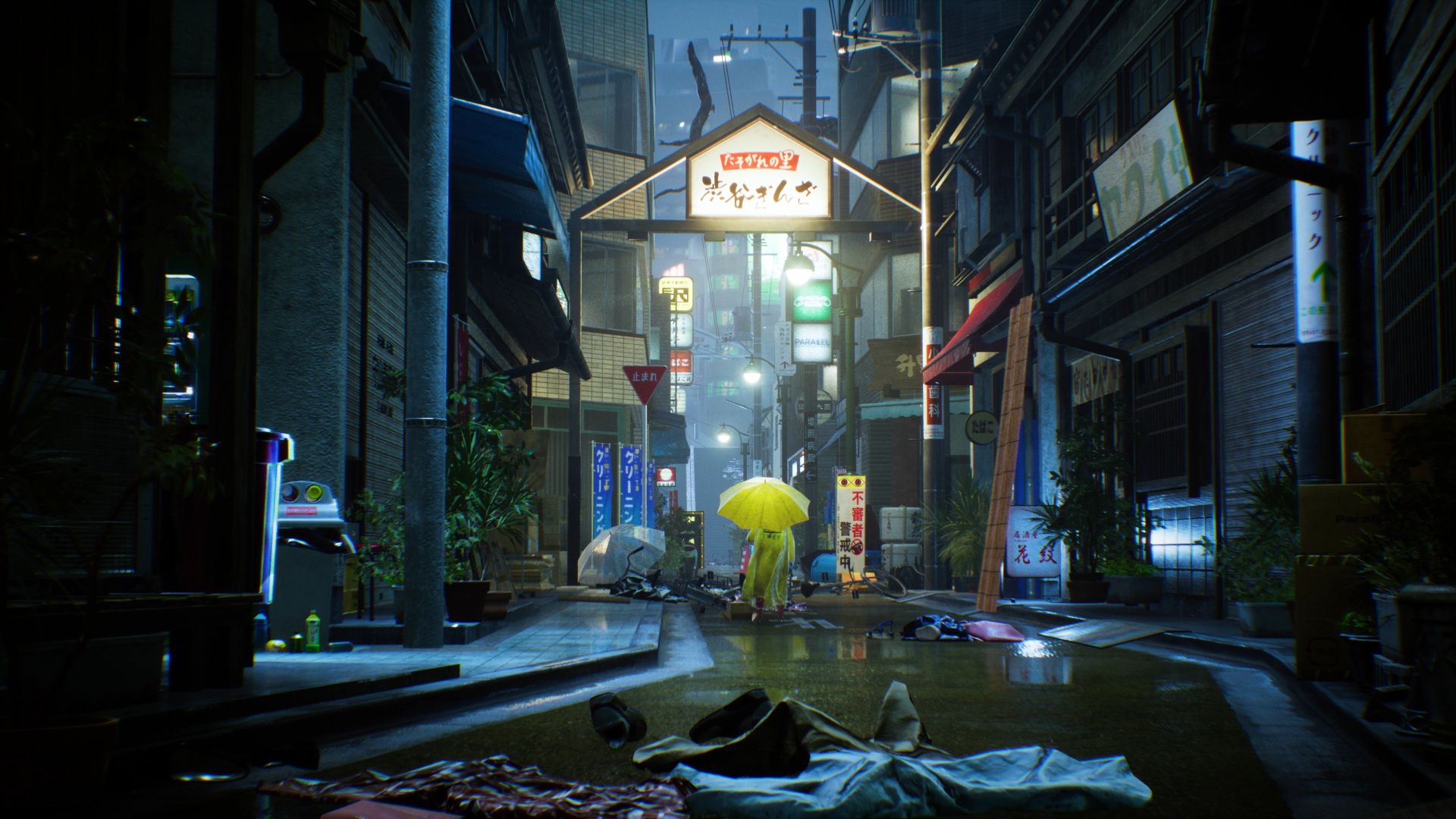
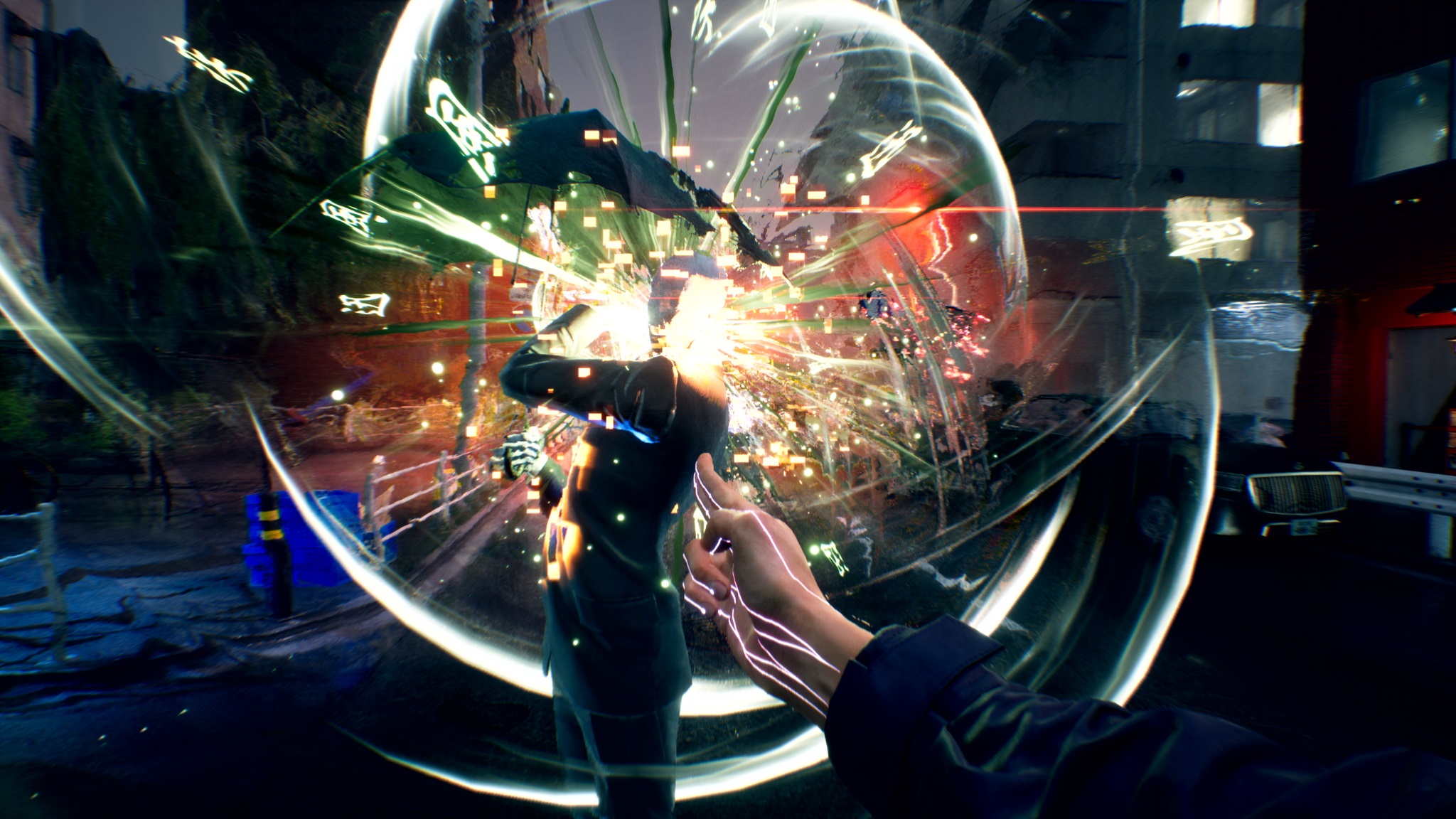
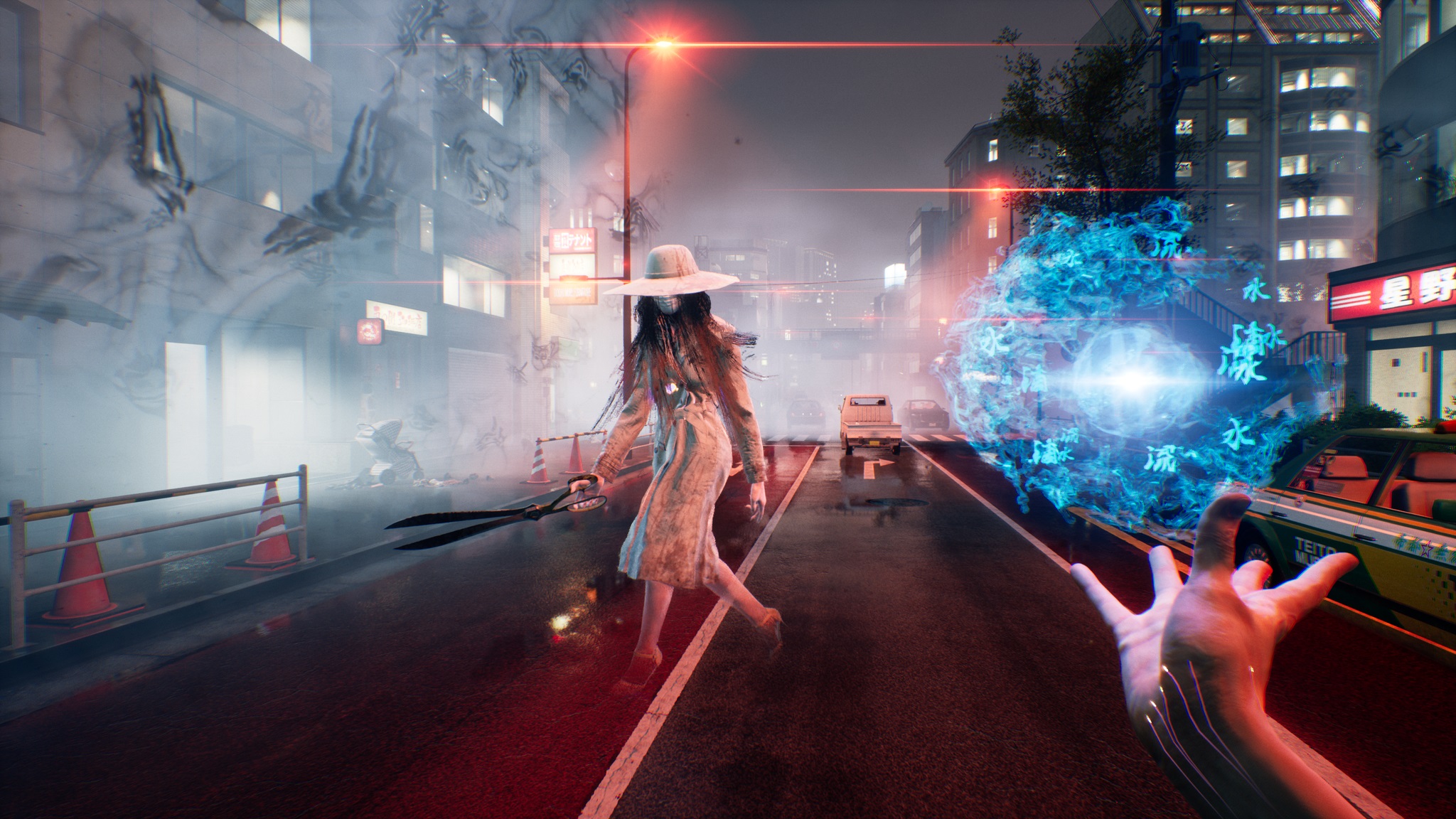
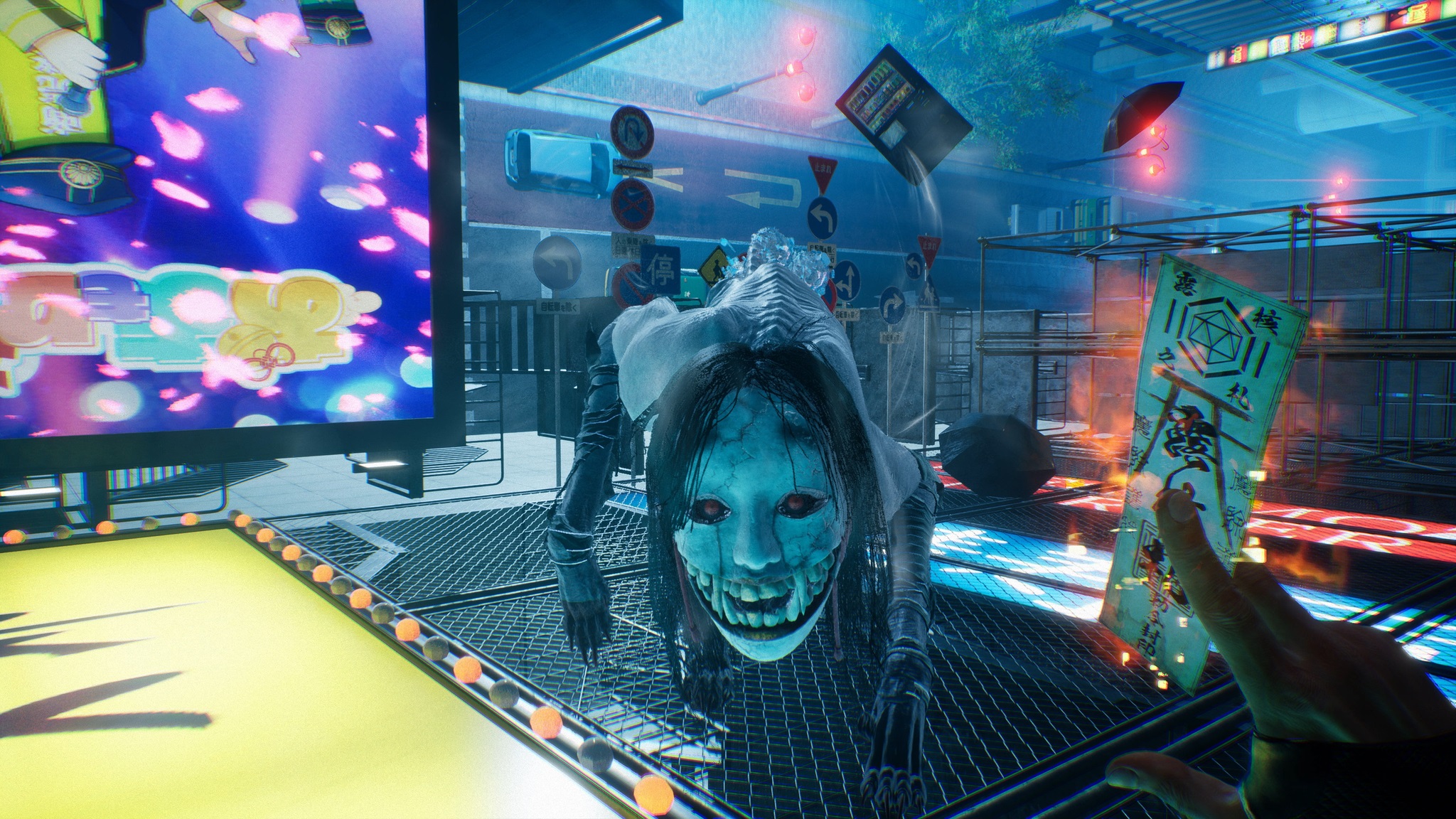

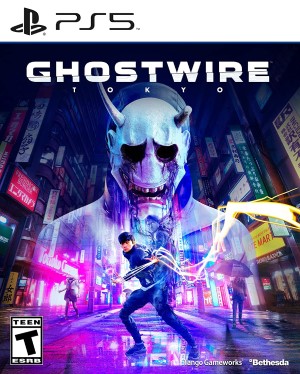



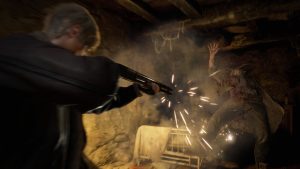



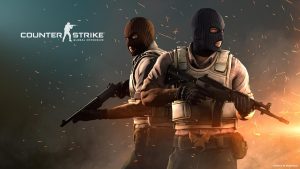
Share Your Thoughts Below (Always follow our comments policy!)